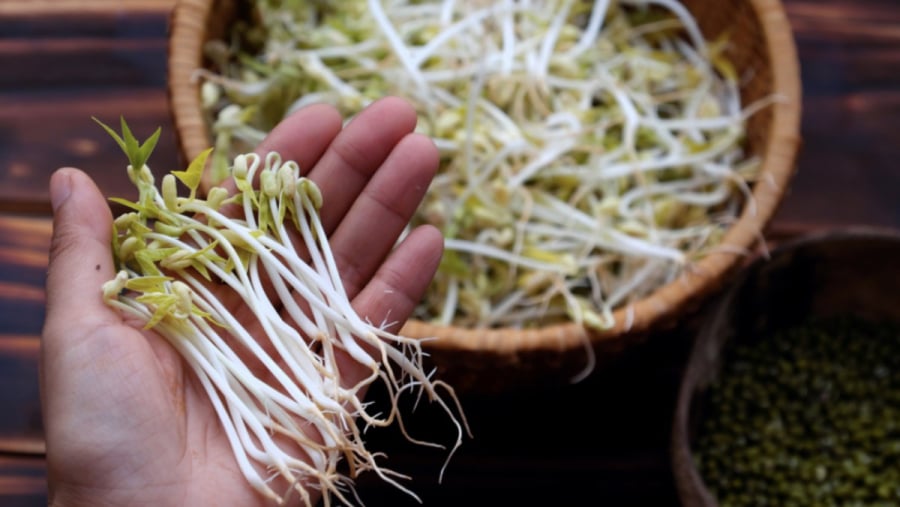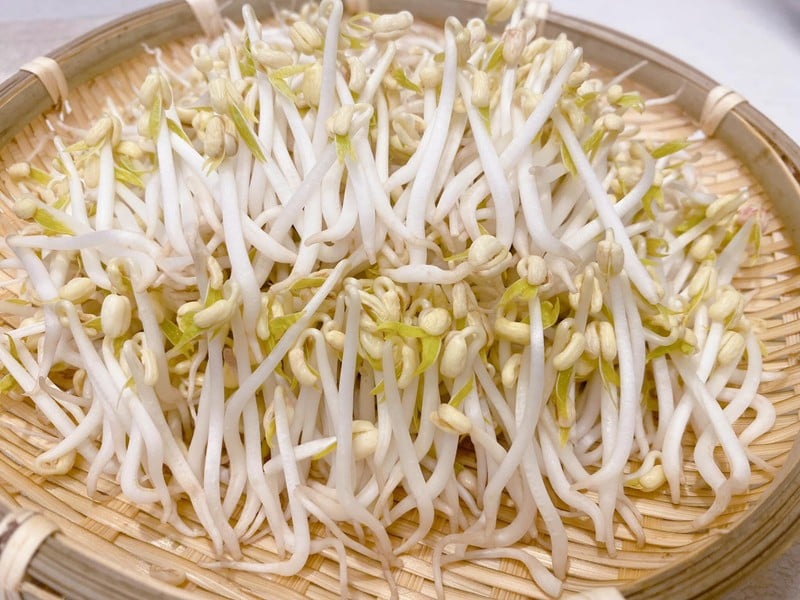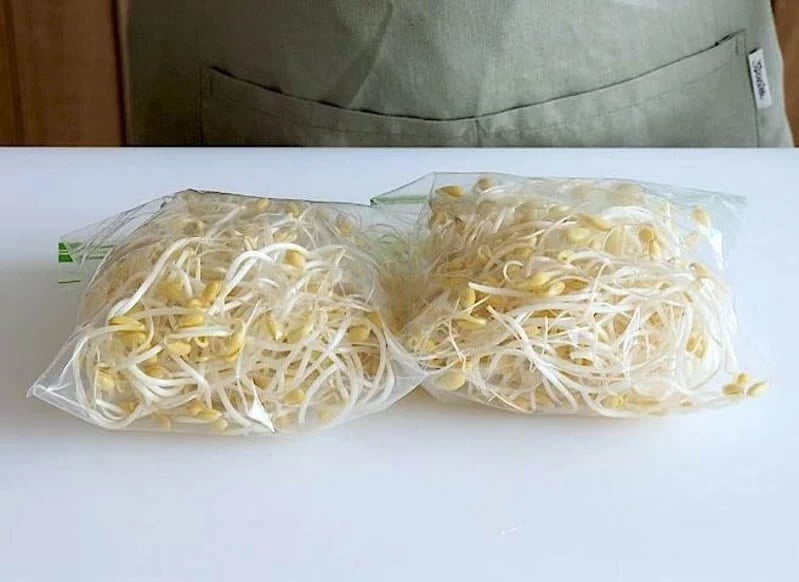Bean sprouts, a familiar vegetable in the daily diet of Vietnamese people, bring not only a refreshing taste but also abundant nutrients essential for the body. However, if not stored properly, bean sprouts can quickly spoil, lose their nutritional value, and even pose a danger to health. Let’s explore three common mistakes in storing bean sprouts and learn the correct way to preserve their full nutritional value.
Nutritional value and health benefits of bean sprouts
Bean sprouts are an excellent source of protein, vitamin C, vitamin K, folate, and minerals such as potassium, calcium, and iron. Notably, bean sprouts are low in calories, aid digestion, and help cleanse the digestive system. Moreover, nutrition experts at the National Institute of Nutrition assert that bean sprouts improve cardiovascular health, boost immunity, and enhance resistance thanks to their high vitamin content.

The importance of proper storage of bean sprouts
Storing bean sprouts not only maintains their freshness but also ensures food safety. Improper storage can lead to bacterial and mold growth, spoiling the bean sprouts and causing health issues such as food poisoning. This article will help you understand common mistakes in storing bean sprouts and guide you on how to store them correctly to retain their nutrients and prolong their shelf life.
Mistake 1: Storing at room temperature
Room temperature (approximately 25-30 degrees Celsius) is an ideal environment for bacterial and mold growth. Leaving bean sprouts at this temperature will cause rapid bacterial growth, leading to their decay. Expert Nguyen Thi Lan Anh, Deputy Director of Ho Chi Minh City Nutrition Consulting Center, warns that keeping bean sprouts at room temperature for too long will result in nutrient loss and make them a health hazard.
Bean sprouts will spoil quickly, emit an unpleasant odor, and show signs of decay. Consuming spoiled bean sprouts can lead to symptoms such as stomachache, diarrhea, and even food poisoning.

Mistake 2: Soaking bean sprouts in water for too long
Prolonged soaking depletes essential vitamins and minerals from the bean sprouts. Additionally, if the soaking water is not changed frequently, it creates an ideal environment for bacterial growth, causing the bean sprouts to turn soft and lose their crispness.
The bean sprouts become soft and limp, losing their nutritional value. This can be especially dangerous if you use them for cooking without thorough inspection.
Mistake 3: Exposing bean sprouts to direct sunlight
Sunlight can reduce the vitamin C content in bean sprouts. Direct exposure to sunlight will cause them to wilt and lose their freshness. According to research by Ho Chi Minh City University of Agriculture and Forestry, light can also stimulate the growth of microorganisms, reducing the quality of bean sprouts.
Consequently, the bean sprouts become dry, losing their crispness and freshness. This not only diminishes the culinary experience but also poses health risks if consumed inadvertently.
Proper storage of bean sprouts
To store bean sprouts correctly, follow these steps:
- Rinse thoroughly: Wash the bean sprouts under running water to remove dirt and impurities.
- Drain excess water: Use a clean cloth or let the bean sprouts air-dry before storage.
- Store in an airtight container: Place the bean sprouts in an airtight container or ziplock bag to prevent air and bacterial infiltration.
- Refrigerate: Keep the container of bean sprouts in the refrigerator’s crisper drawer, maintaining a temperature of approximately 4-8 degrees Celsius.

Additional tips for storing bean sprouts
Line the bottom of the storage container with absorbent paper to wick away excess moisture. Change the absorbent paper regularly to ensure the bean sprouts remain dry.
Before using stored bean sprouts, carefully inspect them for any discolored or rotten sprouts. Rinse the bean sprouts again before cooking, and consume them within 3-5 days to ensure safety.
Proper storage of bean sprouts not only preserves their nutritional value but also ensures food safety and prolongs their shelf life. With this storage method, you can save costs and protect your family’s health.
Correctly storing bean sprouts is crucial for maintaining their nutritional value and ensuring food safety. Apply these bean sprout storage tips to enjoy fresh and safe meals. Remember, a little caution in the storage process will allow you to fully enjoy the benefits of this beloved vegetable every day.
The Miraculous Benefits of Drinking Vối (Vietnamese Mint) Tea: 7 Reasons to Indulge
Introducing a beloved beverage of the Vietnamese, vối leaf tea. This humble brew is more than just a refreshing drink; it’s a treasure trove of health benefits waiting to be unlocked. Not many are aware of the powerful properties that a simple cup of vối leaf tea holds. It’s time to delve into the wonders of this traditional tonic and uncover why it deserves a special place in your daily routine.



































